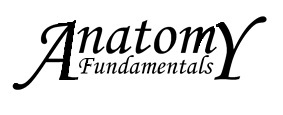As Christmas approaches I usually try to find something festive and anatomical. In the past we have looked at the flight of reindeer and how you process your Christmas dinner, an advent of eponymous terms, reindeer and angels, cold paws in the snow, and party shoes. This year I want to bring you an anatomical phenomenon that you may be completely unaware of.
I present to you the anatomical Christmas tree.

You probably haven’t seen this before unless you hang around in body building gyms or someone points it out to you (I encountered it the second way).
What creates this tree?
The edges of this tree are formed by the medial side of the latissimus dorsi muscles. These run all the way up the sides of the back and are used to pull the arms down, or body up if you are doing pull ups – these are the infamous Lats.
They do not go all the way to the spine because the whole of the lower back is covered with a sheet of fascia called the thoracolumbar fascia. This is formed by several layers of fascia – a connective tissue that can not be developed in the same way as the muscle fibers of the lats. Hence, as you develop your lats the differentiation between the bulging muscle and the flat sheet of connective tissue becomes more pronounced.
The trunk of the tree is made up from a group of muscles that extend all the way up the sides of the spine. This group is known collectively as the erector spinae muscles – they literally keep the spine erect.
The final step to revealing a Christmas tree is drop your body fat down to around 5%. I am obliged to point out that this is not advised. The advice is that your body fat should be around 20% (varies with age). Dropping down to 5% will affect some of the metabolic pathways in your body so if you want a Christmas tree you are probably better off popping down the shops.

